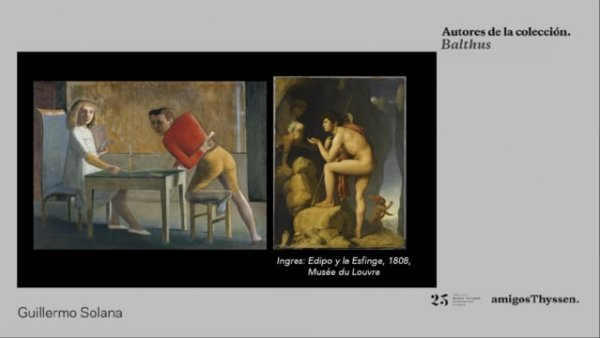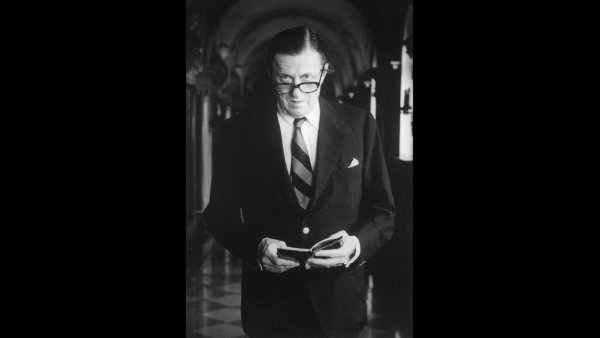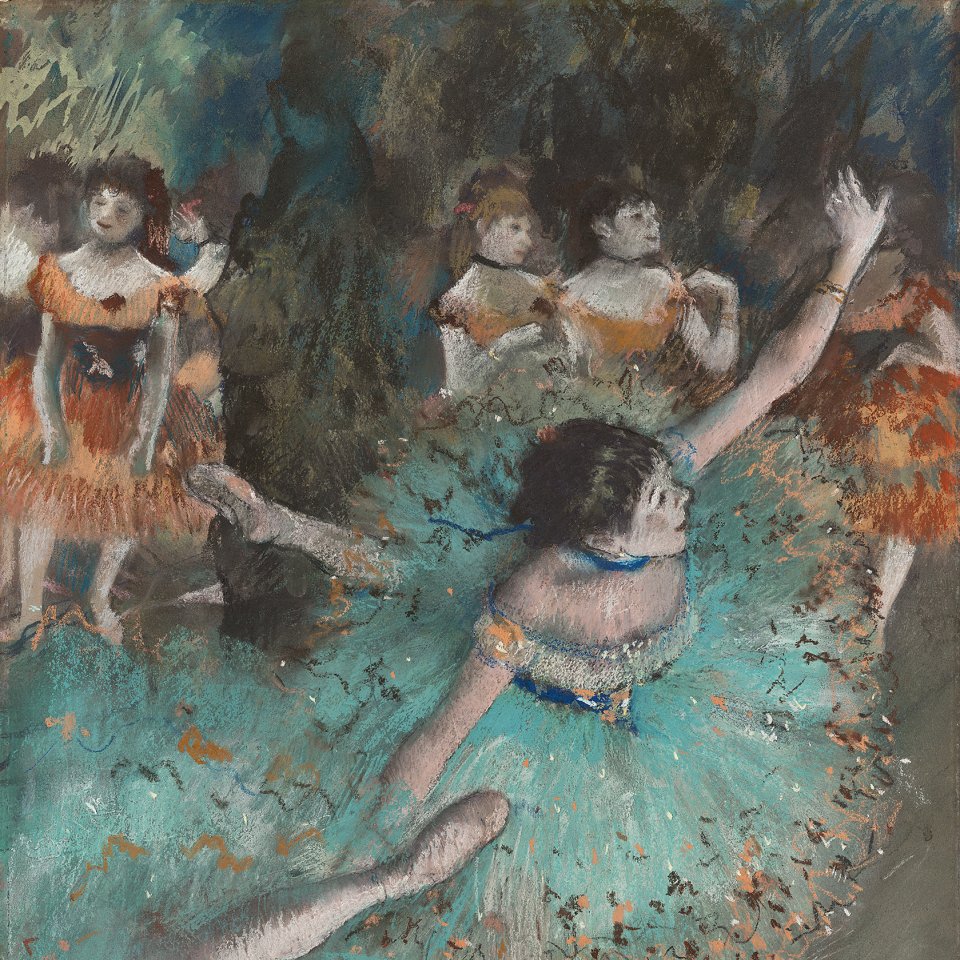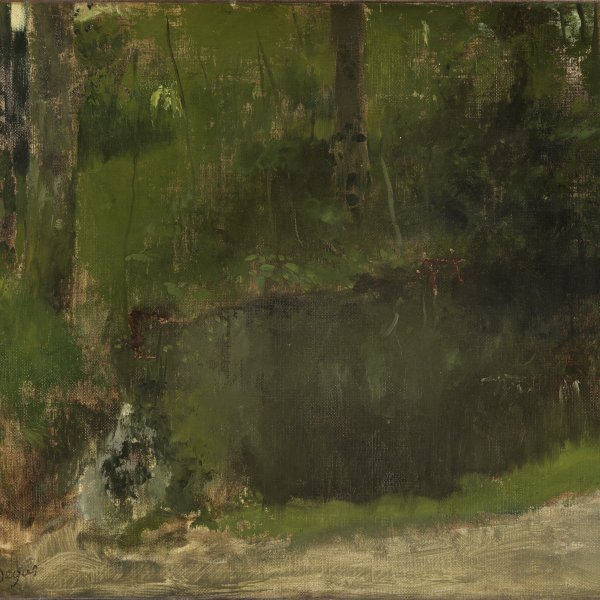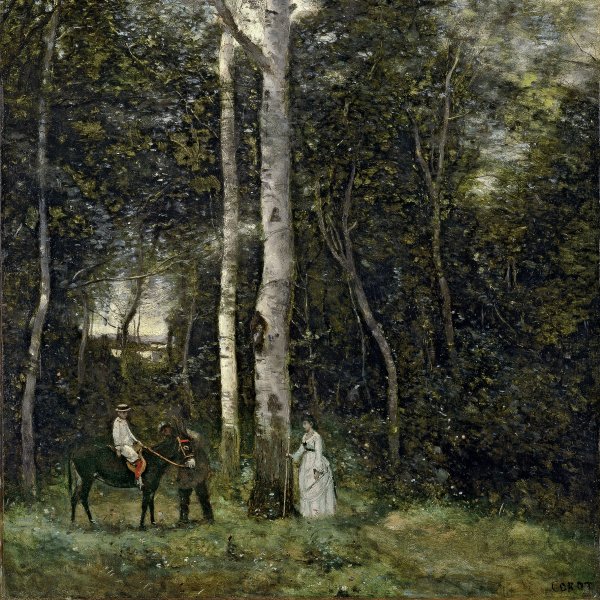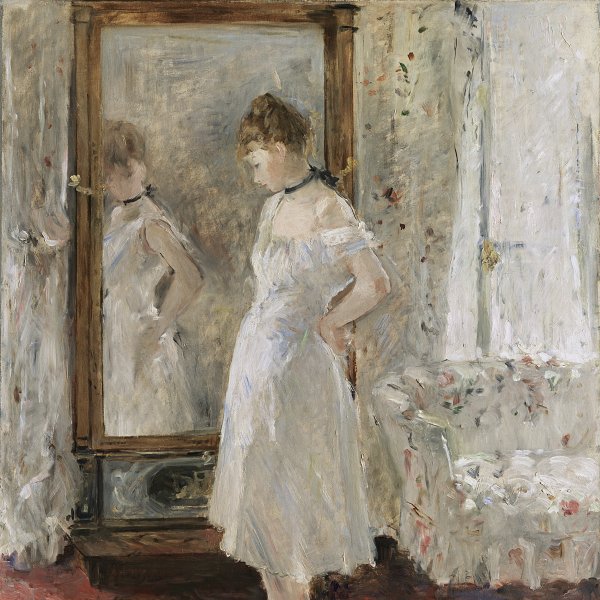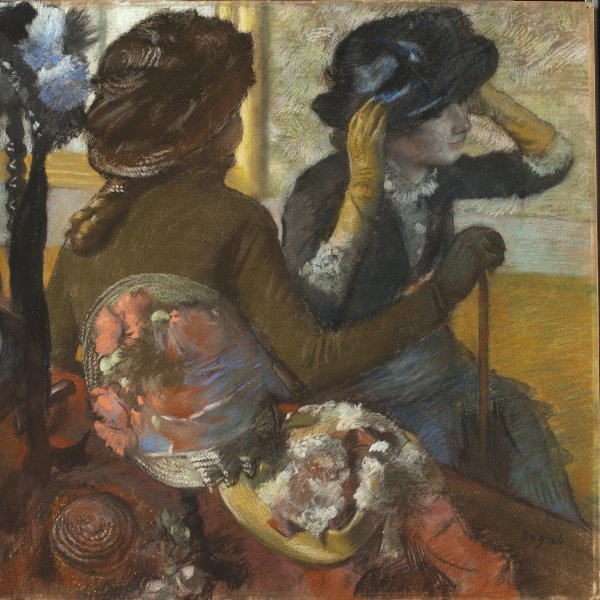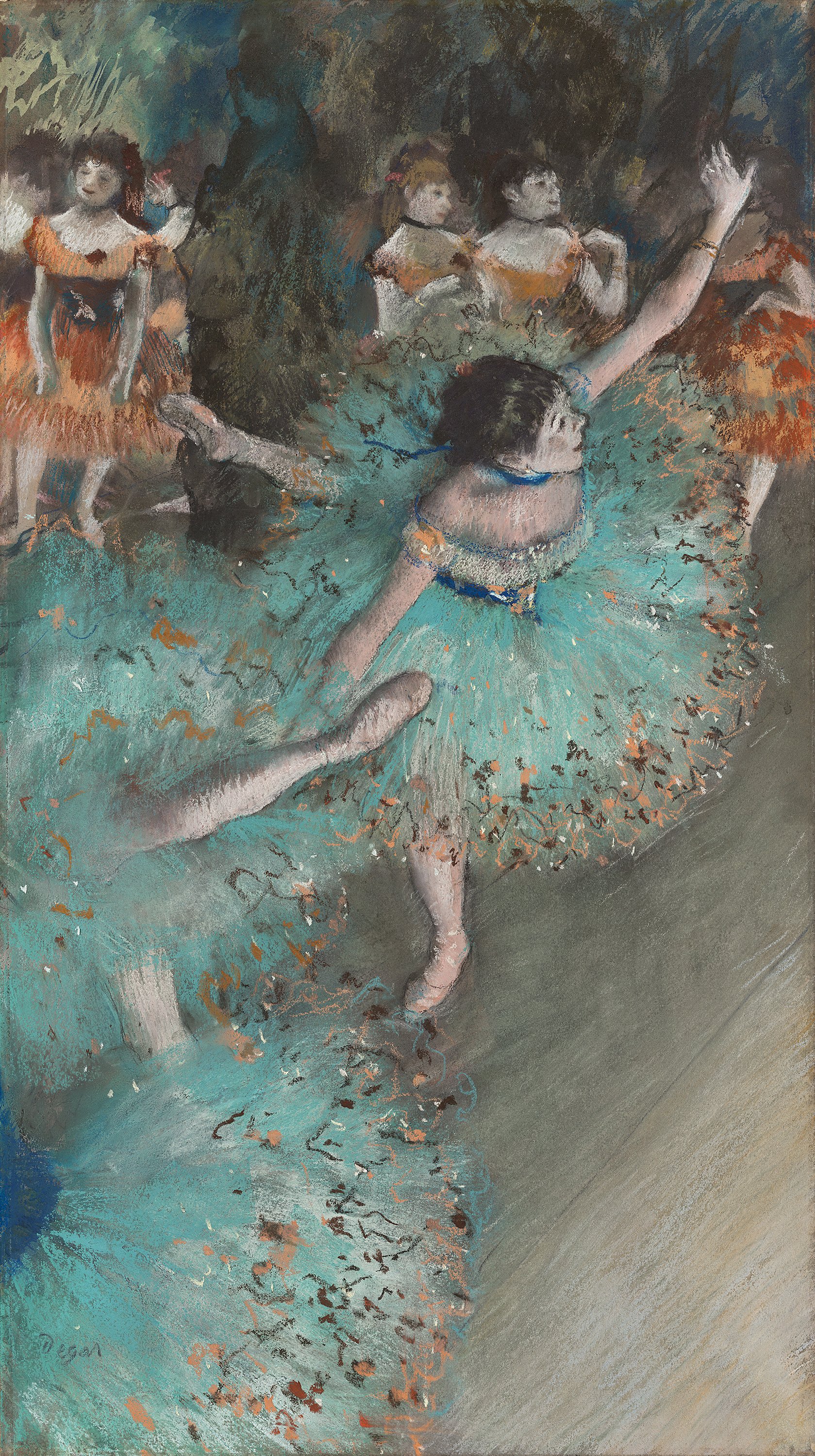Swaying Dancer (Dancer in Green)
Degas was fascinated by the world of ballet; hence, it figured prominently in many of his paintings. Here, the group of dancers is depicted in mid-performance, as viewed from an upper side box. Only one of the girls in green is shown full-length, captured as she executes a swift, complicated turn. The other figures are cropped, leaving the viewer to imagine the rest. In the background, a number of ballerinas dressed in orange stand against the landscape scenery, awaiting their turn. Degas’ use of a cropped, off-centred pictorial space was influenced by photography and by Japanese prints. He felt that the unfinished, transitory nature of reality could only be conveyed using a fragmented technique. Here, the fleeting nature of the movements is captured with rapid pastel strokes, applied with immense skill.
The Impressionists, who played an active role in modern life, were devotees of the theatre, the café-concert and the opera and struck up relationships with actors, actresses, ballerinas and singers. The recently opened opera house designed by Charles Garnier, a landmark building in Haussmann’s new Paris, was one of the places frequented by Edgar Degas, who devoted much of his artistic career to the world of ballet from 1874 onwards. The artist, who regarded dance as an essential vehicle for studying the human figure in movement, repeatedly drew and painted the changing poses of ballerinas. He depicted them in all kinds of positions, rehearsing or in mid-performance on stage, dressing or tying their shoes, and his works bear witness to their huge physical effort and concentration. Ronald Pickvance publishes an interesting testimony by Louisine Havemeyer, Mary Cassatt’s American friend and an enthusiastic collector of Degas, who reported that when asked why he painted so many ballerinas, the painter had replied, “because, madame, it is only there that I can rediscover the movements of the Greeks.”
In the Museo Thyssen-Bornemisza Swaying Dancer, also called Dancer in Green, Degas presents us with a stage performance for an audience who is not depicted but shares the same position as the viewer. Our gaze falls on the scene as if we were viewing it through opera glasses from one of the side boxes that provide privileged views of the stage and a glimpse of the backstage. The use of a high, slanting viewpoint was a device employed by the artist to capture his subjects in unexpected poses.
Of the group in the foreground only one of the ballerinas is shown full length raising her arms and left leg in a fast, complicated pirouette. The other figures are shortened and we see only fragments of their legs or parts of their tutus, for Degas leaves the rest of them and the steps they perform up to our imagination. In the background, depicted frontally, a few orange-clad dancers in a relaxed position await their turn or have just finished performing. The stage set is a blurred image of what appears to be a rocky landscape with trees, which lacks significance in the overall composition.
This manner of shortening the figures, which Degas used in all his ballet scenes, is derived from the influence of Japanese prints and photography, which led him to create a pictorial space in which the action, unlike in traditional Western art, no longer takes place in the centre of the painting. Degas wished to show that reality is always transitory, changing and incomplete and should therefore be rendered in a fragmented manner. Furthermore, the bold foreshortening and swift gestures of the girls convey a sensation of rapid movement that heightens the instantaneousness of the scene. The fleetingness of the action is captured by the light brushstrokes made possible by pastels, which Degas uses with unprecedented technical virtuosity. This medium, which became fashionable in eighteenth-century Europe for portraits of the upper middle class, was placed on a par with oil painting by the Impressionists. But it was undoubtedly Degas who excelled as the true master of this technique.
One of the first owners of the painting was the British painter Walter Sickert, an unconditional admirer of Degas, who no doubt acquired it from the art historian and collector and editor of the Gazette des Beaux-Arts, Charles Ephrussi (1849–1905). Shortly before acquiring it, his wife Ellen wrote to her friend the French painter Jacques-Émile Blanche: “We are delighted that Degas is selling — I think we shall end by giving up the dull necessities of life & buying one of his pictures ourselves! They haunt our imagination.” Swaying Dancer, which Sickert, perhaps at Degas’s suggestion, called Dancer in Green, hung in pride of place in his West Hampstead home from spring 1886 onwards. After the couple divorced it passed to Ellen’s sister Mrs T. Fisher Unwin, née Jane Cobden.
Paloma Alarcó
Emotions through art
This artwork is part of a study we conducted to analyze people's emotional responses when observing 125 pieces from the museum.

